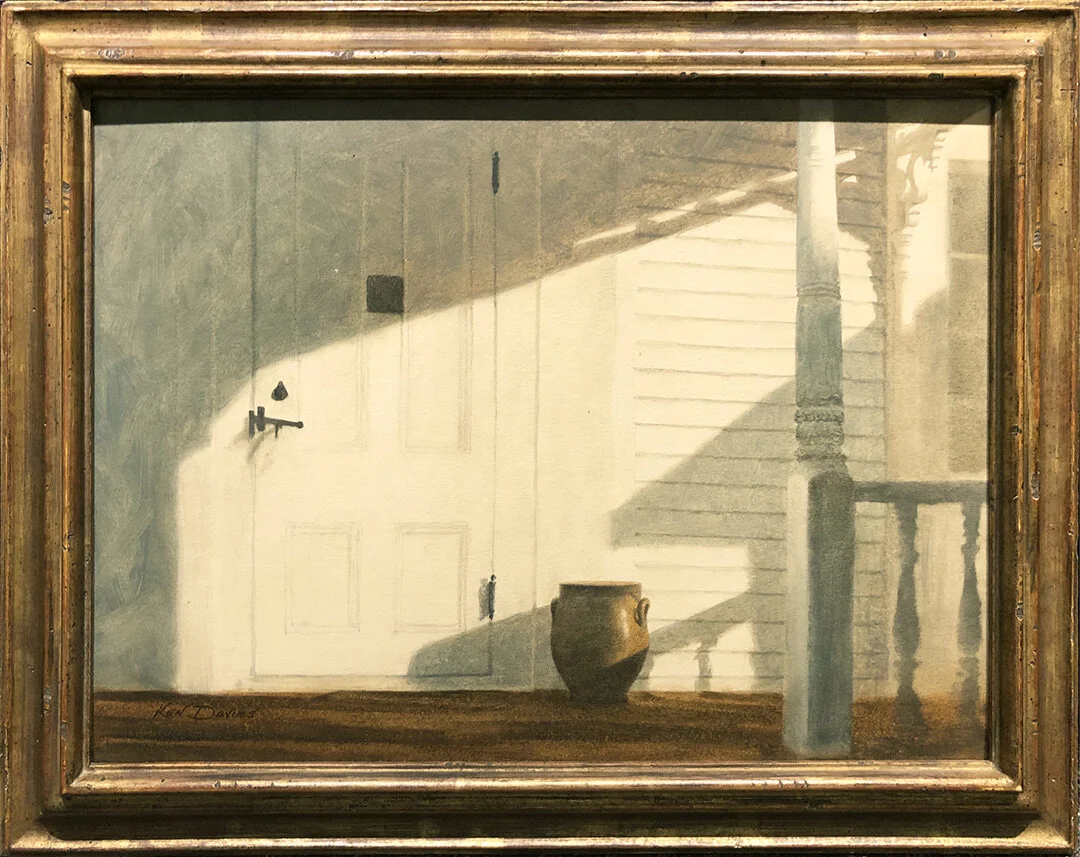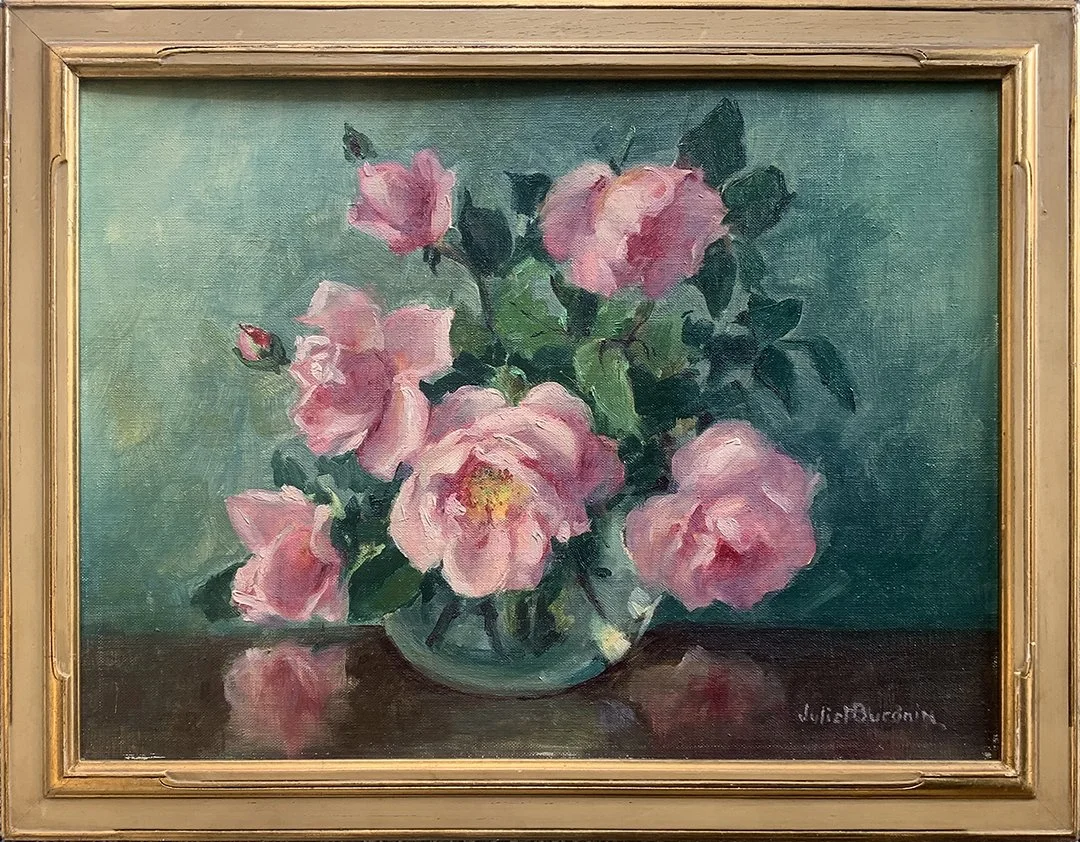Harry Beard
Harry Beard
Still Life
Oil on Canvas
16 x 19 inches Oval
Signed Lower Right
This following biography was researched, compiled, and written by Geoffrey K. Fleming, Executive Director, Huntington Museum of Art, Huntington, WV.
HARRY BEARD (May 4, 1840 – November 19, 1889)
Illustrator, landscape, portrait, genre and still life painter. Born in Ohio, the son of Mary Caroline Carter (1815 – 1903) and the American genre painter, James Henry Beard, N.A. (1811 – 1893). He went by the name “Harry” to help differentiate himself from his famous father and was known as “Captain Harry Beard” for much of the 2nd half of his life. All four of the Beard sons became professional artists, including James Carter (1837 – 1913), James Henry Jr. “Harry” (1840 – 1889), Thomas Francis “Frank” (1842 – 1905) and Daniel Carter (1850 – 1941). Their uncle was the noted American artist, William Henry Beard, N.A. (1824 – 1900). While Beard painted extensively when he was younger, later in his life he was known primarily for illustrating books and periodicals.
Harry Beard grew up in Ohio and was living with his family in Kentucky when he registered for the draft during the American civil war. He then served during the war with the 30th Missouri Regiment, which saw action all over the western part of the south, including at Vicksburg, Mississippi. His earliest known dated painting is from 1863, created just before he entered into his military service. Following the war Beard entered into business in Cincinnati, Ohio (with Wilson, Hayden & Co.) and then in Covington, Kentucky, as did several of his brothers, before they decided to become full-time artists. This was much to the chagrin of their father, who did not want them to follow his path into the art world.
About 1874 he joined other members of his family in moving to New York, where they resided in Flushing, Queens County, Long Island, New York. Depending on the period, he had a number of studio locations, including at 191 Broadway and later in the Judge Building, located at the corner of 5th Avenue and 16th Street in Manhattan. In both locations he shared his studio space with his younger brother, Daniel.
In an 1877 article on what was going on in New York artist’s studios, the New York Herald remarked upon some of his recent works: “Harry Beard has two pleasing and amusing little caricature pictures [in his studio], called ‘What’ll You Take?,’ and the answer, ‘Whiskey Straight.’ In the first, a saucy, rakish young Skye terrier, with his hair down over one eye and gazing cutely out of the other, stands with one hand on a glass resting on two cigar boxes and the other on a bottle of claret. In ‘Whiskey Straight’ a dissipated old soaker of a coach dog, with bleached eyes and a red nose, in an old coat, scarf and a battered stovepipe, answers the question.” That year at Leavittt’s Art Rooms he also showed additional paintings featuring animals, which were noted as including “…capitally rendered dogs on china plates."
He exhibited primarily in New York at the National Academy of Design, and at the spring exhibition in 1878 Beard showed a work entitled “Charley, Drive Me to Stewart’s,” which was favorably reviewed by the New York Evening Herald, which noted that the work “… is a pretty and clever conceit… it represents a number of children who have constructed an imaginary coach out of some chairs and are about to take an imaginary drive.”
Beard was a prolific illustrator, and some of his works were included in the 1887 book The Sportsman’s Paradise, published by J. B. Lippincott, and the 1888 book Little People: and their Homes in Meadows, Woods, and Waters, published by Charles Scribner’s & Sons, both of which he illustrated alongside his brother, Daniel. He also worked alongside his fellow New York artists in designing and illustrating Easter, Christmas and New Year’s cards for the noted chromolithographic printing firm of Louis Prang and Company. Beard’s fifty-three illustrations for the book Tin-Types Taken in the Streets of New York, published posthumously in 1891, were noted as “…being in full sympathy with the spirit of the text.” Beard also served as one of the judges for the art department of the Queen’s County Fair in 1887.
Harry Beard was discovered unconscious on November 17, 1889 at Coffey’s Old Homestead Hotel, located at the corner of 59th Street and 6th Avenue, having been exposed to a gas leak in his room and was taken to Roosevelt Hospital. According to articles of the period, the exposure to the gas was considered by most to have been an accident, due to an incorrectly lit gas light. He died in Manhattan, New York City, on Tuesday, the 19th of November 1889 at the age of forty-nine years having never awakened from his state of unconsciousness. Beard’s body was taken to a funeral home on 125th Street and he was buried in the Flushing Cemetery, located in Flushing, Queens County, New York, in Section M, Grave 148.
His illness and death was widely reported in local and regional newspapers. The New York Herald remarked upon his passing: “He was a very talented painter and a genial, whole souled fellow. He used to frequent Coffee’s place a great deal, where he and many of his brother artists would gather to have a good time and discuss matters appertaining to their profession.” The New York Times noted that Beard was known as “… an artist of some merit, his studies of animal life commanding favorable consideration.” The Cincinnati Enquirer remarked “He had a thousand friends in Cincinnati who will grieve deeply at the sad news.”
A few years after his death, The Illustrated Buffalo Express commented upon his life and work: “The late Capt. Harry Beard was an artist and writer of prose and verse. His first picture, ‘Nip and Tuck,’ showing a baby and a dog pulling at a doll between them, was published all over the world and was even reproduced in marble and in china.”
Though there are undoubtedly other exhibitions in which Beard participated, those presently known include the following: Brooklyn Art Association, Brooklyn, NY, 1876; Buffalo Fine Arts Academy, Buffalo, NY, 1877; National Academy of Design, New York, NY, 1877-79, 1881; Leavitt Art Rooms Exhibition & Sale, New York, NY, 1877; Matthew’s Gallery Exhibition & Sale, New York, NY, 1878; Union League Club Art Exhibition, New York, NY, 1878; Mechanic’s Fair Exhibition, Boston, MA, 1878.
Beard’s works are not known to be in any public institutions at present. The majority of his works reside in private collections throughout the United States.





